Land acknowledgements are vital practices in recognizing and honouring Indigenous Peoples as the traditional and original stewards of the land. These acknowledgements pay homage to their enduring connection to the land, waters, and community. Moreover, a personalized land acknowledgement reflects your gratitude as a visitor and highlights your respect for Indigenous cultures.
What is a Land Acknowledgement?
A land acknowledgement is a respectful and meaningful way to recognize the Indigenous Peoples as traditional and original stewards of the land. It honours their enduring connection to the land, waters, and community and is a personal reflection of your gratitude as a visitor to this land.
Why Personalize Your Land Acknowledgement?
- Meaningful Connection: Personalizing your land acknowledgement shows that you have taken the time to learn about the history and culture of the Indigenous Peoples of the area.
- Respect and Recognition: It demonstrates respect for the Indigenous communities and acknowledges their presence and contributions.
- Awareness and Education: Personal acknowledgements can educate others about the rich history and ongoing contributions of Indigenous Peoples.
- Commitment to Reconciliation: Personalizing your land acknowledgement is a step towards reconciliation, showing your commitment to understanding and supporting Indigenous rights and cultures.
How to Personalize Your Land Acknowledgement
- Research and Understand
• Learn about the Treaty 7 region and the Indigenous Peoples whose traditional territories you are on.
• Treaty 7 includes the Blackfoot Confederacy (comprising the Siksika, Piikani, and Kainai Nations), the Tsuut’ina Nation, and the Iyarhe (Stoney) Nakoda (including Chiniki, Bearspaw, and Goodstoney First Nations).
• Recognize the Historic Northwest Métis and Otempimswak Métis Government of Alberta. - Learn the Pronunciation
• Correct pronunciation is a sign of respect. Make an effort to learn and pronounce the names of the Nations correctly.
• Blackfoot Confederacy: Siksika (Seeg-si-gah), Piikani (Pee-Gah-nee), Kainai (Gay-nah)
• Tsuut’ina: Tsuut’ina (Soot-tenna)
• Iyarhe (ee-yar-hey) Stoney Nakoda: Chiniki (Chi-nee-kee), Bearspaw (Bear-spaw), Goodstoney.
• Otempimswak (oh-teh-pim-swak) Métis (May-tee) Government of Alberta - Reflect on Your Connection
• Acknowledge that you are a visitor to this land.
• Think about your personal connection to the land. How has it impacted you? What experiences have you had on this land?
• Reflect on how you can contribute to reconciliation and respect for Indigenous cultures. - Craft Your Acknowledgement
• Start by acknowledging the traditional territories.
• Mention the specific Nations by name.
• Share your personal reflection or commitment.
• Keep it sincere and respectful.
Example of a Personalized Land Acknowledgement
“I would like to acknowledge that we are on the traditional territories of the Blackfoot Confederacy, which includes the Siksika, Piikani, and Kainai Nations, as well as the Tsuut’ina Nation and the Iyarhe Nakoda, including the Chiniki, Bearspaw, and Goodstoney First Nations. I also acknowledge the Otempimswak Métis Government of Alberta.
As someone who has lived on this land for many years, I am deeply grateful for the opportunity to experience its natural beauty and resources. This land has provided me with a place to live, work, and raise my family, and I recognize that this privilege comes from the stewardship and care of the Indigenous Peoples who have lived here for millennia.
I am committed to learning more about the rich histories and diverse cultures of the Indigenous communities in this region. Their resilience, traditions, and contributions continue to inspire and educate me.
In my daily life, I strive to support reconciliation efforts by actively participating in community events, supporting Indigenous-led initiatives, and educating myself and others about the ongoing impacts of colonization. I pledge to respect and honour this land and its first inhabitants, acknowledging their enduring presence and contributions to our collective future.”
Practice and Deliver with Respect
• Practice your land acknowledgement until you are comfortable with the pronunciation and flow.
• Deliver it with sincerity and respect, making eye contact with your audience.
• Prioritize and invest in your ongoing learning and awareness, ensuring that your land acknowledgement isn’t performative.
Additional Resources
- Events, Books & Learning
- Invest in your own education by attending cultural events and reading books and articles that explore the history and cultures of the Indigenous Peoples of the Treaty 7 region. This will help deepen your understanding and appreciation of their traditions and contributions.
- Workshops and Seminars
- Participate in workshops and educational sessions focused on Indigenous history and the significance of land acknowledgements. These gatherings provide valuable insights and foster a deeper connection to the community.




















